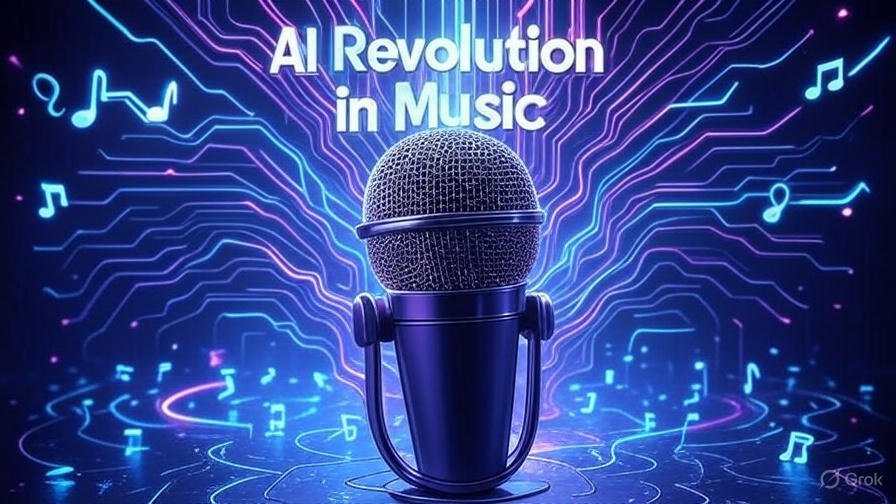AI Video Generators: Transforming Content Creation in 2025 America

Imagine whipping up a professional-grade video for your YouTube channel or business pitch in minutes, no camera or editing skills needed. That’s the magic of AI video generators 2025, and they’re taking the US by storm. These tools, powered by cutting-edge tech, are making AI content creation US faster, cheaper, and more creative than ever. From TikTok creators to corporate marketers, everyone’s jumping on board, churning out everything from viral shorts to polished ads with just a few clicks or text prompts. But with great power comes great responsibility—ethical challenges AI video like misinformation and copyright issues are sparking heated debates. Let’s dive into how AI video tools for creators and AI video business applications are reshaping the game in 2025, while tackling the tricky questions they raise. Buckle up—this is the future of content creation!
Why AI Video Generators Are Taking Over
The AI video content trends in 2025 are exploding, and it’s no surprise why. Web sources say content creators in the US are pumping out 3.7 million videos daily, with platforms like YouTube and TikTok driving demand. Making videos the old-school way—filming, editing, post-production—can take hours or even days. AI video generators cut that down to minutes, letting anyone create slick content without a Hollywood budget. Sentiment on X is buzzing, with creators raving about “turning ideas into videos in a snap,” though some worry about oversaturation killing originality.
The tech behind these tools—think machine learning and natural language processing—lets them generate videos from text, images, or voice prompts. Businesses are eating it up too, with 68% of US marketers using AI for video content, according to web sources. The 2025 tech boom, fueled by faster internet and cheaper cloud computing, is making AI video generators 2025 a must-have for creators and companies alike. But it’s not all smooth sailing—ethical concerns are looming large.
Practical Applications for Creators
For creators, AI video tools for creators are like having a personal film crew in your pocket. Here’s how they’re using these tools to shine in 2025:
- Social Media Content: Tools like Synthesia and Runway let creators turn blog posts or scripts into engaging TikTok or Instagram Reels in under 10 minutes. For example, a travel vlogger can type “sunset beach montage” and get a polished video with AI-generated visuals and voiceovers.
- Educational Videos: Platforms like Pictory transform webinars or lecture notes into bite-sized tutorials, perfect for YouTube or online courses. Web sources note that creators save 40% of production time using these tools.
- Personal Branding: Descript’s AI avatars let influencers create videos without showing their face, ideal for quick updates or niche content like gaming walkthroughs.
On X, creators share stories of making $500–$5,000 monthly with AI-generated Shorts, praising tools for their speed. But some warn about “cookie-cutter” videos flooding platforms, urging creators to add personal flair to stand out.
AI Video Business Applications
Businesses are leaning hard into AI video business applications, and it’s changing how they connect with customers. Web sources highlight that US companies spent $2.3 billion on AI video tools in 2024, with growth expected in 2025. Here’s how they’re using them:
- Marketing Campaigns: Tools like Lumen5 turn product descriptions into slick ads, with templates for platforms like LinkedIn or TikTok. A small business can create a 30-second promo for $50/month, versus thousands for a traditional agency.
- Training Videos: Synthesia generates employee onboarding videos in multiple languages, cutting production costs by 60%, as per web sources.
- Customer Support: AI avatars from Colossyan create personalized response videos, boosting engagement by 20% for e-commerce brands.
Sentiment on X shows businesses thrilled with the cost savings, with one marketer saying it’s “like hiring a video team for pennies.” But there’s a flip side—some customers on X complain about “robotic” AI videos lacking human touch, pushing companies to balance efficiency with authenticity.
Top AI Video Generators in 2025
The AI video generators 2025 market is packed with options. Here’s a rundown of the top players:
- Synthesia: Creates lifelike AI avatars for presentations; starts at $22/month. Web sources praise its multilingual support, ideal for global businesses.
- Runway: Offers text-to-video and image-to-video generation; $15/month for basic plans. Great for creators experimenting with cinematic effects.
- Pictory: Turns text or audio into videos with stock footage; $19/month. Perfect for quick social media content.
- Descript: Combines video editing with AI transcription; $12/month. Loved for its Overdub feature for voiceovers.
- Lumen5: Generates marketing videos from blogs; free tier, paid from $29/month. Web sources note its drag-and-drop simplicity.
On X, users rave about Runway’s creative freedom but note Synthesia’s avatars can feel “too perfect,” raising ethical flags about realism. These tools are game-changers, but they come with some serious questions.
Ethical Challenges of AI Video Generators
The rise of AI video generators 2025 brings ethical challenges AI video that can’t be ignored. Here are the big ones:
Misinformation and Deepfakes
AI videos can create hyper-realistic content, making it easy to spread misinformation. Web sources warn that deepfake ads or fake news videos could mislead millions, especially with 2025’s polarized media landscape. On X, users share concerns about “AI lies going viral,” pointing to cases where fabricated videos fooled audiences. Tools like Runway have safeguards, but bad actors can still exploit open-source models.
Copyright Concerns
Many AI video tools train on existing content, raising questions about ownership. Web sources note that videos generated from copyrighted material—like stock footage or music—can lead to legal battles. Sentiment on X is heated, with creators demanding clearer guidelines on who owns AI-generated content, especially when it’s monetized.
Bias and Representation
AI models can inherit biases from their training data, leading to skewed representation in videos. Web sources highlight cases where AI avatars underrepresented certain demographics, like non-Western faces or accents. On X, users call for diverse datasets to ensure fair outputs, noting that “AI shouldn’t amplify stereotypes.”
Addressing these challenges requires transparency, like labeling AI-generated content, and stricter regulations, as discussed in web sources. Companies are starting to add watermarks, but the industry’s still playing catch-up.
How Creators and Businesses Can Navigate Ethical Issues
To use AI video tools for creators responsibly, here’s what you can do:
- Label AI Content: Clearly mark videos as AI-generated to avoid misleading viewers.
- Use Ethical Tools: Choose platforms like Synthesia with transparent training data policies.
- Check Copyright: Ensure inputs (text, images) are original or licensed to avoid legal issues.
- Test for Bias: Review outputs for fair representation, adjusting prompts if needed.
Web sources suggest that businesses adopting these practices can build trust, with 75% of US consumers preferring transparent brands. Sentiment on X emphasizes accountability, with creators urging “don’t just churn out AI videos—make them honest.”
AI Video Content Trends in 2025
The AI video content trends shaping 2025 include:
- Hyper-Personalized Ads: AI tools create tailored video ads based on user data, boosting conversions by 30%, as per web sources.
- Interactive Videos: Platforms like Runway enable choose-your-own-adventure-style content, popular on TikTok.
- AI Avatars in Gaming: Virtual influencers in games and streams, driven by tools like Descript, are gaining traction.
On X, creators are excited about interactive videos but warn of high costs for advanced features, pushing for more accessible tools. Web sources predict the AI video market will hit $3.7 billion by 2027, driven by these trends.
Future Impacts on Content Creation
Looking ahead, AI video generators 2025 will reshape AI content creation US:
- Democratized Creativity: More creators will enter the market, with tools lowering barriers to entry.
- Real-Time Editing: AI will enable live video tweaks, ideal for streaming or events.
- Ethical Standards: Expect stricter regulations on deepfakes and copyright by 2030, as per web sources.
Sentiment on X is optimistic but cautious, with users calling for “guardrails” to keep AI video ethical. The future’s bright, but it needs careful navigation.
Conclusion: The AI Video Revolution Awaits
AI video generators 2025 are transforming AI content creation US, empowering creators and businesses with AI video tools for creators and AI video business applications. From viral TikTok clips to corporate ads, these tools make content creation faster and more accessible, but ethical challenges AI video like misinformation and copyright demand attention. By embracing transparency and creativity, you can ride this wave responsibly. Got a favorite AI video tool? Share it below and check out more tech insights on Mehena to stay ahead in 2025’s content game!




